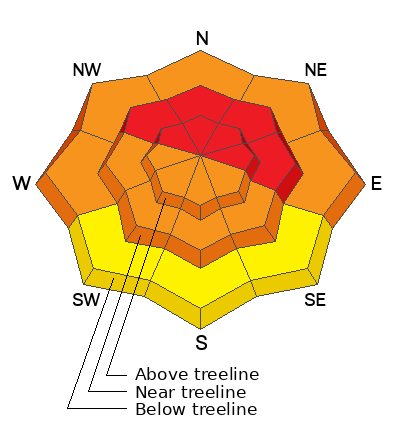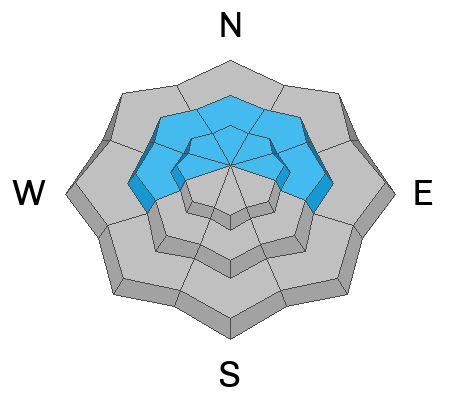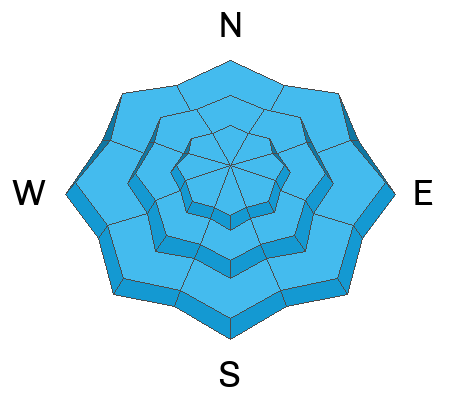Forecast for the Moab Area Mountains

Issued by Eric Trenbeath on
Monday morning, January 2, 2023
Monday morning, January 2, 2023
DANGEROUS AVALANCHE CONDITIONS
The avalanche danger is HIGH today on all steep, wind drifted slopes near and above treeline that face NW-N-NE-E. Avoid being on or under steep slopes in these areas where natural and human triggered avalanches up to 4' deep are likely. A CONSIDERABLE avalanche danger exists on W-SW-S-SE aspects near treeline and above, and on steep northerly facing slopes below. In these areas, human triggered slab avalanches involving new and wind drifted snow could step down into buried persistent weak layers producing deeper, and more dangerous avalanches. Avalanche terrain should be avoided today. Stay off of and out from under slopes steeper than 30 degrees and avoid avalanche run out zones.

Low
Moderate
Considerable
High
Extreme
Learn how to read the forecast here









